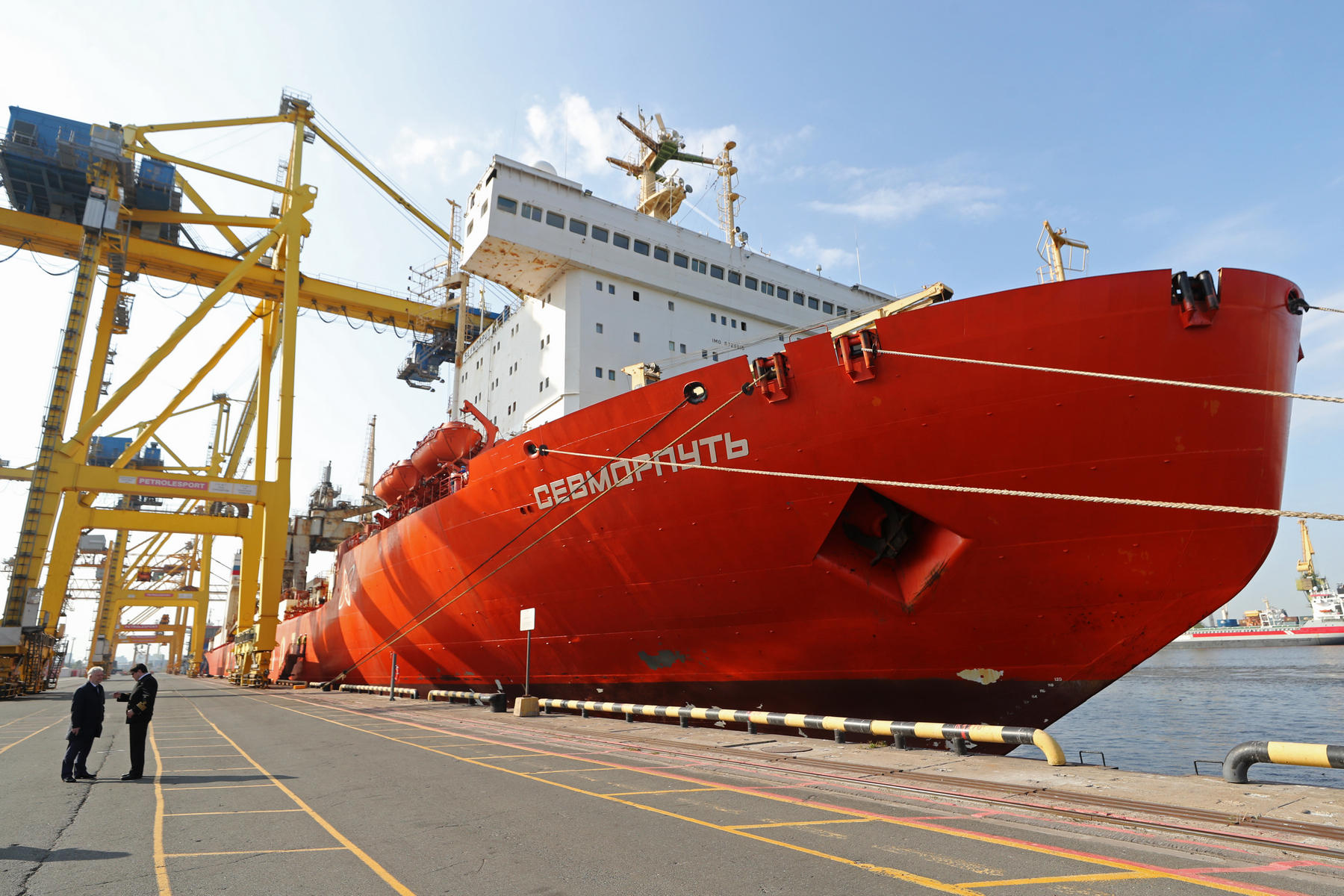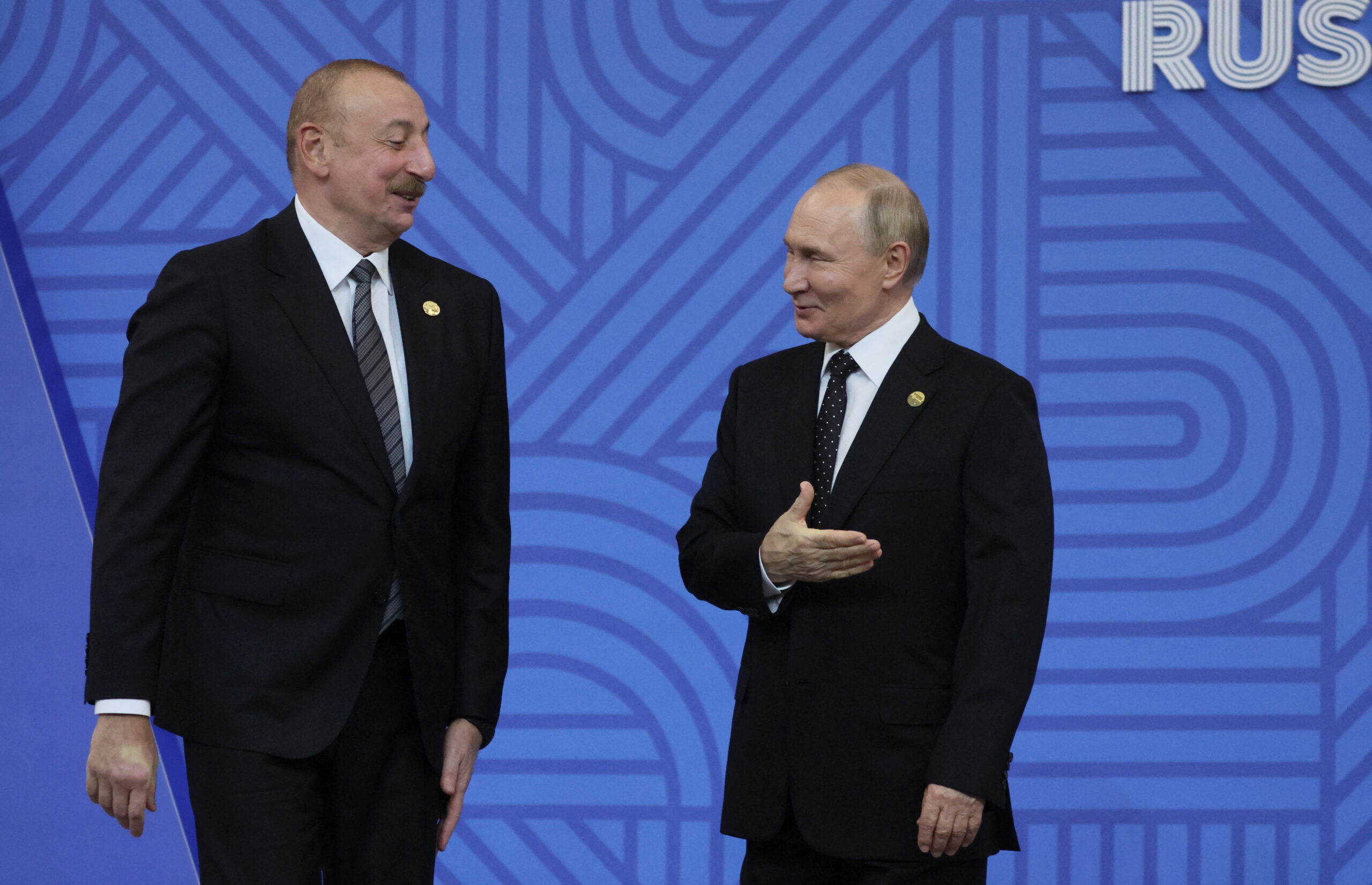The Northern Sea Route (NSR) stretches from the Kara Strait to the Bering Strait. Without doubt, it is a key transit infrastructure project for the Kremlin. Cargo traffic along the NSR has grown from 7 million tonnes in 2016 to almost 33 million tonnes by 2020.
Much of that growth came from works relating to new gas and oil fields in the Arctic. And to safeguard the route, Russia’s nuclear icebreaker fleet is being upgraded.
But clearly, the NSR has more than just an economic dimension. It is also key for pursuing Moscow’s foreign policy interests while maintaining a domestic political balance. For the sake of political expediency, for instance, Rosatom in 2019 became the NSR operator. It also acquired shares in the Delo Group (which owns TransContainer) and came to an agreement with FESCO in late 2020 to take over its commercial seaport of Vladivostok. Yet that leaves a lot on Rosatom’s plate; the firm already handles Russia’s nuclear power, its nuclear weapons complex, various wind generation projects, and the development of composite materials for the aerospace industry.
So, why Rosatom? This choice, like much of the NSR project, provides insights into the functioning and goal-setting of the Russian political system in general, though it requires a fair bit of historical context.
Decades of Arctic dreams
Long before Rosatom was given its NSR role, the idea of Arctic expansion captured the minds of the Russian leadership. In the mid-2000s, spikes in hydrocarbon prices and increasingly alarmist global warming forecasts left many convinced that the NSR could one day be a lucrative shipping lane of year-round, ice-free navigation.
The NSR was supposed to become a network for Russian commodities travelling from new oil fields, and a springboard to world markets. Strategically, it could provide an alternative trade route between Asia and Europe.
However, even now those trade link dreams remain distant. Transit cargo accounted for approximately 1.3 million tonnes of the total freight traffic of the 33 million tonnes traded in 2020. This is only a fraction of the Asia-Europe transit via the Suez canal.
Still, the Russian military also started to show increased interest as well.. ‘Arctic fever’ began in the 2010s when a system of military bases was reintroduced. Officially, the Northern Fleet became a military district on 1 January 2021. Thus, the concept of the new exploration of the Arctic has been used to justify both the extensive development of Russia’s commodity-based economy and Russia’s new role in the system of international relations.
The logic of extensive economic and miliatry development has been predominant. And it has remained so in spite of changes in global hydrocarbon markets; the decline in foreign demand for Russian oil and gas; and awareness that the ice cover in the Arctic Ocean will remain in some form in the coming decades. What kept up the perceived continued need to develop unexplored gas and oil fields discovered back in the Soviet era on the northern Yamal Peninsula and the Taymyr Peninsula? An expected natural depletion of old fields, and Russia’s limited access to advanced hydrocarbon extraction technologies. The Russian authorities have no choice here; they have already introduced tax allowances and direct subsidies for projects on the Arctic coast.
Corporate balancing act
This forced momentum is tipping the political and economic balance within Russia. From the mid-1930s, shipping through the NSR was limited to state food and fuel supplies to Arctic districts and military supplies. The only large company dependent on NSR freight was Norilsk Nickel: back in 2016, the port of Dudinka accounted for 1.2 million tonnes of NSR cargo traffic out of a total of 7 million tonnes. Yet by the end of the 2010s, the composition of cargo traffic had changed dramatically. Of the 33 million tonnes of NSR cargo traffic in 2020, more than 20 million were exports of liquefied natural gas produced by NOVATEK and oil extracted from Gazprom Neft’s Novoportovskoye field. NOVATEK is building another liquefied natural gas plant on the Taymyr while Rosneft is preparing to produce up to 30 million tonnes of oil annually. Coal companies also have plans to exploit the riches of the peninsula. On the whole, the federal project to develop the NSR envisages increasing its cargo turnover to 80 million tonnes as early as 2024, by exploiting both new commodity deposits and transit.
It is only logical that there is room for another player — the Sovcomflot state-owned shipping company, which is involved in expanding the fleet of ships for Arctic commodity-based projects. In addition, Roscosmos, which plans to send satellites into orbit in the 2020s to provide the NSR with communications, weather and ice condition data, has joined the initiative to develop shipping in the Arctic.
Then there was a need to balance Rosneft, which was engaged in building tankers and icebreakers as part of its other large-scale project, the Zvezda shipyard in the Primorsky Krai. Out of this balancing act came the decision mentioned above: the NSR was handed over to Rosatom, since it is the owner of the main transport asset, nuclear-powered icebreakers.
Rosatom’s Arctic duties
After that fateful decision, Rosatom has since become responsible not only for the nuclear-powered icebreakers but also for the entire NSR infrastructure and operations, and also for achieving the Kremlin’s goal of 80 million tonnes of cargo traffic in 2024. The corporation itself is cautious about the possibility of attaining this result. The Russian authorities, meanwhile, are already thinking about doubling cargo traffic through the Northern Sea Route in 2024–2034.
Rosatom’s various deals with major logistics companies — and how the NSR maritime operations headquarters was established rather far from the NSR itself, in Murmansk — indicate one thing: it is very likely that Rosatom will be in control of the entire maritime route from Murmansk to Vladivostok. It will also get a share in the maritime shipments of fuel and food to the Russia’s Far North (some 7.5 million tonnes of cargo in 2020), which will translate into extra revenues. In 2019, for example, the earnings of the newly established NSR’s board of directors alone amounted to more than 9 billion roubles ($140 million). This may seem insignificant compared to 1.152 trillion roubles ($17.8 billion) in total revenue. But it may account for a more noticeable share in the future.
The main thing is clear: the development of the Arctic serves as a tool to ‘mobilise’ Russian corporations to preserve the economic and political stability of the Russian ruling system. It extensively expands the resource potential and industrial facilities of commodity-based companies and provides more procurement options for the shipbuilding and even space industries. All these initiatives have become a top priority, which makes everyone move in the same direction and increasingly involves smaller players — balancing the Russian system of power and glossing over internal contradictions.
A global self-preservation strategy
Russia’s approach to commodities exports in general also has a bearing on the NSR and vice versa. Since the second half of the 2000s, Russia has pursued a diversification policy. Russia has been doing this to reduce its dependence on European consumers and to stop China from using new oil and gas pipelines to twist Moscow’s arm. The confrontation with the West that took shape in 2014 has only reinforced these efforts. Moscow is trying to occupy a favourable place in the system of international relations by involving foreign partners in its Arctic projects, counterbalancing players against each other in line with the logic that good relations are based on long-term mutual economic interest.
For example, France’s Total (20%) and China’s CNPC (20%) and the Silk Road Fund (9.9%) have stakes in NOVATEK’s Yamal LNG. Again, Total (10%) and CNPC (10%) as well as the Chinese CNOOC Corporation (10%) and the Japanese Mitsui and JOGMEC consortium (10%) joined the Arctic LNG-2 project in Taymyr. In November 2020, the Singaporean oil trader Trafigura bought a 10% stake in Rosneft’s Vostok Oil project in Taymyr (albeit with a loan from a Russian bank). However, the main goal is to attract a consortium of Indian companies – ONGC Videsh, Oil India, Indian Oil Corporation and Bharat PetroResources – as shareholders in the Vostok Oil project. In parallel, Rosatom is trying to involve the Dubai-based DP World in developing the NSR and making it navigable year-round.
The focus is on balanced partnerships with Chinese, Japanese, Indian and Arab businesses while maintaining partnerships with Western companies whenever possible. Moscow’s three main long-term objectives can be identified: 1) to avoid complete international isolation (which does not rule out the prospect of self-isolation), 2) to bank on the needs and capital of developing countries while maintaining full control over key economic assets and 3) to strengthen Russia’s position as a global player despite negative domestic socio-economic processes.
The idea of turning the Russian Arctic into a transit zone between Asia and Europe, which is still being entertained despite the justified scepticism of experts, should also be taken into account in a long-term context. Obviously, the NSR can under no circumstances compete with today’s major trade routes, at least in peacetime. Still, one should keep in mind growing conflicts in relations between the West and China in the coming decade and the evolution of the balance of power in the Indo-Pacific region, the Middle East and North Africa. Moscow assumes that major straits and canals may at some point not be accessible to all participants in world trade. Then, Russia will have a say in big diplomacy thanks to the NSR.










